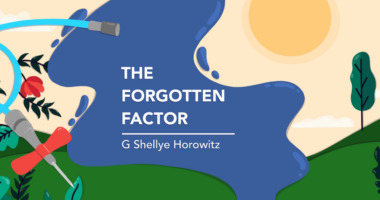When an invisible disability is only seen as attempted fraud
Better verification and awareness can cut down on these damaging instances

An unfortunate incident recently made waves on social media here in the Philippines, where I live, when a restaurant chain posted a dismissive, sarcastic message about fake disability IDs. The poster questioned whether 30% of its customers were truly disabled and mocked those with invisible disabilities. It also reduced mental health conditions to stereotypes and suggested that people should “break their leg” to prove they are “truly disabled.”
As someone familiar with invisible disabilities, I found the post troubling. Hemophilia, the rare bleeding disorder my husband, Jared, has, doesn’t always reveal itself outwardly. Many people with the disease don’t use wheelchairs or crutches daily. They may look fine; those who play sports or engage in bodybuilding may even appear exceptionally healthy. But internally, their bodies tell a different story.
Hemophilia’s nature makes it difficult for others to see the disability. A person who has it might walk into a restaurant looking healthy while experiencing severe joint pain from an internal bleed. Over time, their joints may sustain irreversible damage, leading to movement restrictions. During a bleeding episode, even basic actions like walking, using a hand, or bending a knee can be excruciating or impossible. Yet once these people receive clotting factor treatment, they regain their mobility — at least until the next bleed.
This fluctuation is why hemophilia and many other chronic conditions are classified as invisible disabilities. Their impact varies daily. Just because a person isn’t in visible distress doesn’t mean they don’t face significant limitations.
Why dismissing invisible disabilities is harmful
Any disability makes one disabled as a matter of public policy. The idea that a disability must be constantly visible to be valid is flawed. Many people with legitimate disabilities have good and bad days. Some function normally most of the time, but still need medical accommodations. Others struggle daily in ways that aren’t obvious.
Making assumptions that lump people, inaccurately, into “truly disabled” and “not disabled” categories can reinforce a damaging stereotype. It pressures those with invisible disabilities to constantly prove their struggles so they will be believed. It also fuels skepticism, making life harder for people who already fight for recognition and accessibility.
Moving forward: Balancing fraud prevention with accessibility
No one denies that fake IDs for persons with disabilities (PWD) are an issue. Some people abuse these benefits, and businesses worry about financial losses. However, the solution isn’t to mock or dismiss the entire PWD community. Instead, businesses and policymakers should work together to prevent fraud while preserving accessibility.
Here are steps establishments can take:
- Work with government agencies: Businesses should collaborate with the appropriate government agencies to verify disability IDs. In the Philippines, we have the National Council on Disability Affairs, which has clear guidelines on who qualifies for benefits. It also allows establishments providing these benefits to claim exemptions from value-added tax under Republic Act 10754.
- Improve verification processes: Instead of rejecting PWD IDs based on assumptions, establishments can adopt a standardized verification system, which could include cross-checking IDs with a government database or requiring official certification for specific conditions.
- Educate staff on disability awareness: Restaurant staff should receive training on recognizing invisible disabilities and treating all customers with respect. Instead of viewing every PWD ID with skepticism, they should handle these situations with understanding and discretion.
- Encourage honest conversations: Customers with disabilities should feel comfortable discussing concerns with business owners. If restaurant employees suspect fraud, they should address it without alienating or shaming those who genuinely need accommodations.
Disability isn’t always visible. The best approach to implementing fair measures to prevent abuse is to create a society where those who need support receive it without judgment. Mocking people with legitimate disabilities only causes more harm.
For the hemophilia community and all people with invisible disabilities, awareness, respect, and inclusive policies make all the difference. Businesses, policymakers, and society should work toward solutions that ensure accessibility while maintaining fairness. In the end, a more inclusive world benefits everyone.
Note: Hemophilia News Today is strictly a news and information website about the disease. It does not provide medical advice, diagnosis, or treatment. This content is not intended to be a substitute for professional medical advice, diagnosis, or treatment. Always seek the advice of your physician or another qualified health provider with any questions you may have regarding a medical condition. Never disregard professional medical advice or delay in seeking it because of something you have read on this website. The opinions expressed in this column are not those of Hemophilia News Today or its parent company, Bionews, and are intended to spark discussion about issues pertaining to hemophilia.







Leave a comment
Fill in the required fields to post. Your email address will not be published.